On first arrival at Rintaro, guests pass through a wooden gate that blocks a full view of the Izakaya. The patio in the front frames the recessed restaurant and blocks a view of the cars passing by. On the day that I arrived, it was drizzling—it had been for days—faces around me flushed as they entered. Dining at Rintaro is a sensory experience, a driving beat over controlled movements. Rising plumes of smoke from charcoal, steam from udon pots, a man with chop sticks placing garnishes with precision… I could watch for hours.
Chef and owner Sylvan Brackett was born in Japan and raised in Northern California. His mentors include Alice Waters, cookbook author Nancy Hachisu, and soba chef Kanji Nakatani. In 2003, he became fascinated with Izakaya in Yokohama, just south of Tokyo. Izakayas are traditionally an informal gastropub, meant for drinking sake after work and going out on weekends with friends. He loved the concept of spending hours eating, talking and drinking. There were no Izakayas in the Bay Area at the time, and only a few in New York City. After working for Chez Panisse, he left to cook in Japan. But when he returned, the financial crash of 2008 put a well-primed dream on hold; he went on to cater for six years before opening Rintaro.
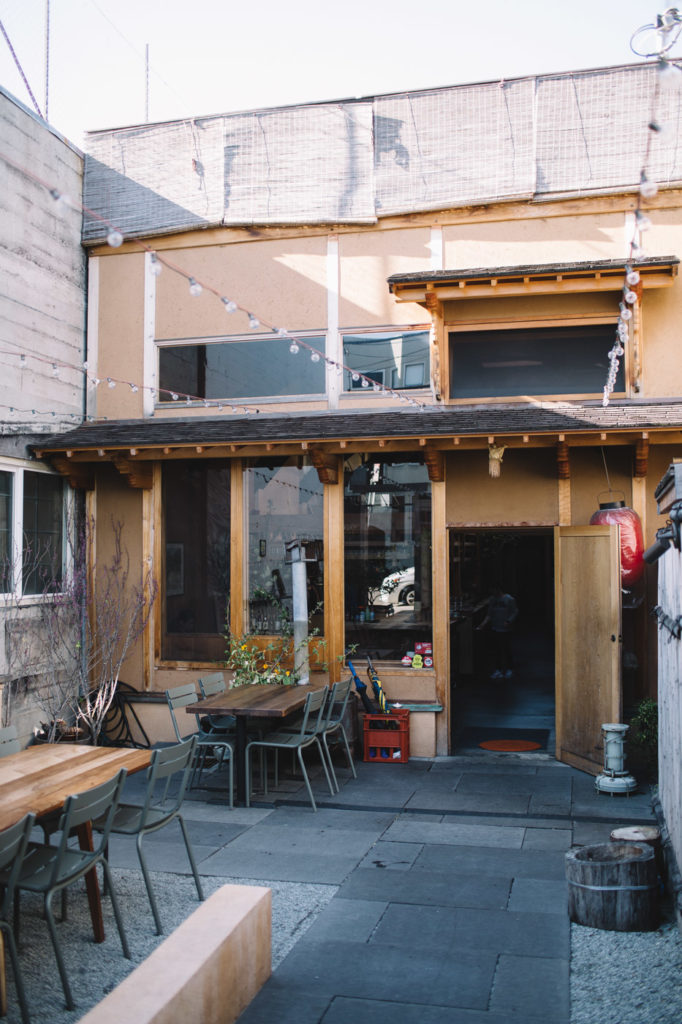
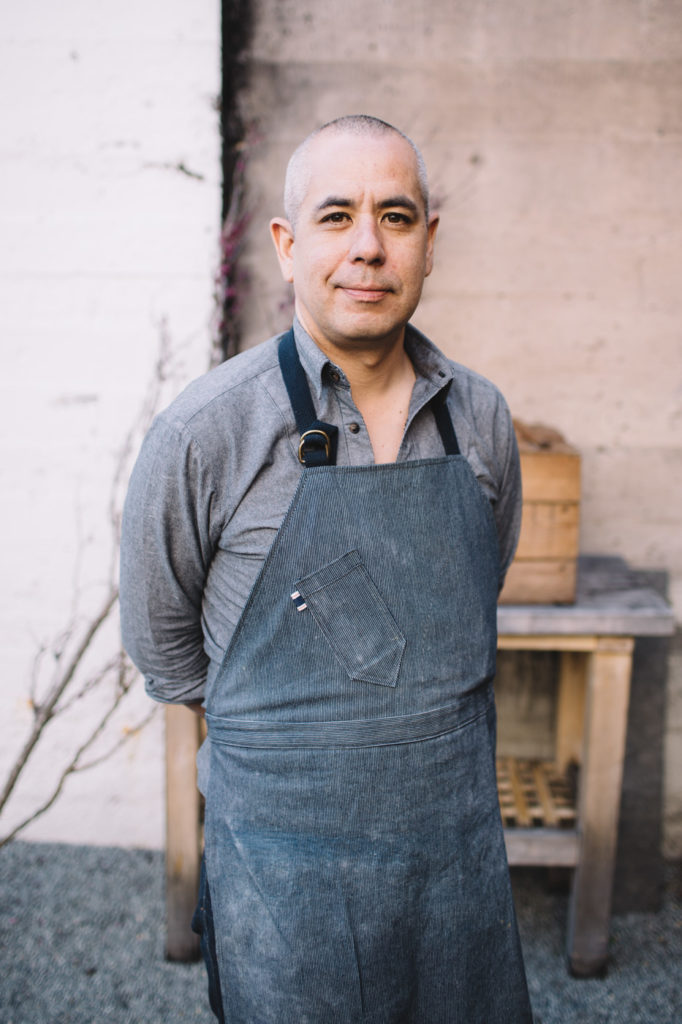
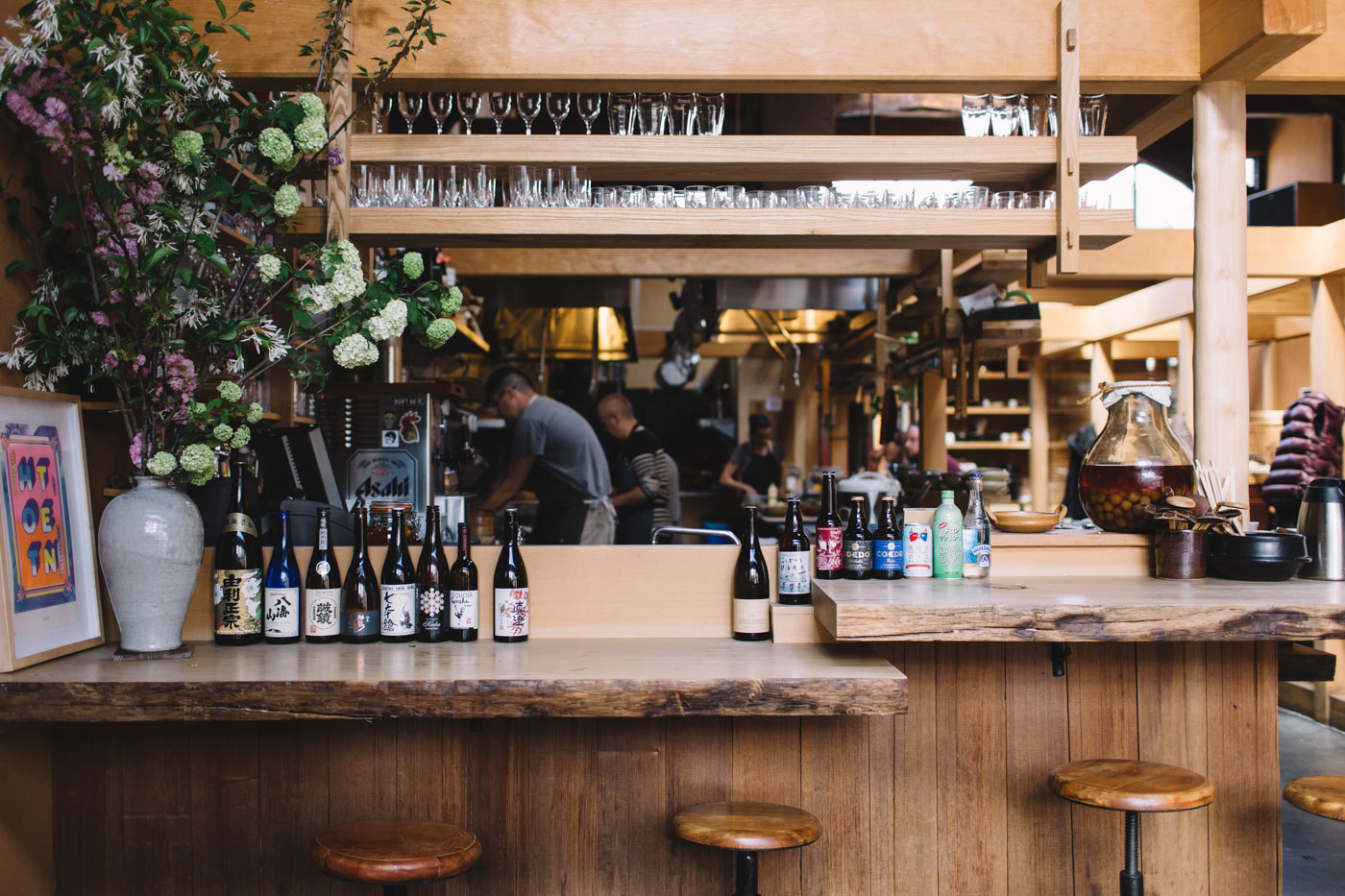
Brackett explained that transitioning from Chez Panisse to Japanese cooking was a shift in concept and approach. “It’s such a completely different way of cooking. In Italian or French food, there is a lot of building and layering of flavors,” he says. “Japanese food seems a lot like taking stuff away. You have essential taste and you are skimming away the scum, making some tastes simultaneously appear and disappear.”
One reason for this departure is that the flavors of umami persist and develop on the palate over a different time frame than other basic tastes. Salty or sweet, for instance, are intense, but then disappear quite quickly. However, experiments have shown that the intensity of substances that impart umami continues to increase for a short period of time after the subject has swallowed the food, making a particular aspect of what makes umami delicious its aftertaste. While French and Italian cuisine also include umami flavors, the technique Brackett explains is a style. The simple approach to umami is evident in all of his dishes.
We met on a day his anchovies, katsuobushi and kombu arrived from Japan. He brought a box to the table, cut it open with a knife and displayed an anchovy that had come from Takamatsu. He cradled in the palm of his hand, explaining that, from the beginning, he decided to do things the hard way if it meant emphasizing aromatics and flavor. He told me the katsuobushi is sourced from a factory in southern Japan, where the whole town smells of the dried, fermented and smoked bonito, which it has produced for hundreds of years. He shaves it fresh every day, which takes 45 minutes, but is a necessary step to capturing its faint fragrance. He pulls day-old katsuobushi from a plastic bag. The pastel pink has faded to a muted beige after just a day of oxidation.
“In Italian or French food, there is a lot of building and layering of flavors. Japanese food seems a lot like taking stuff away.”
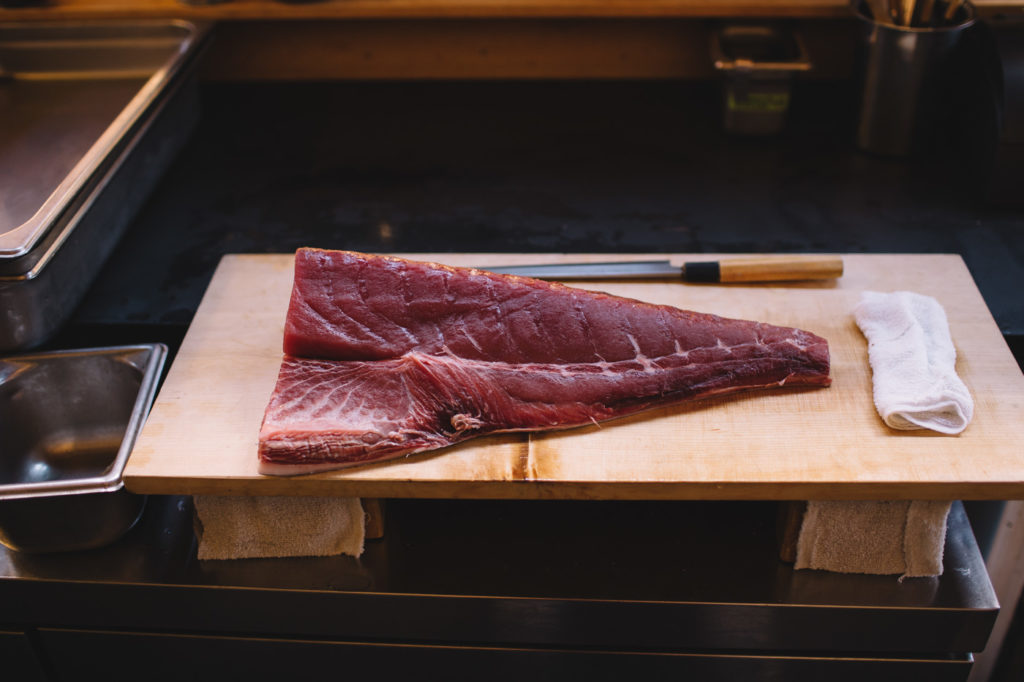
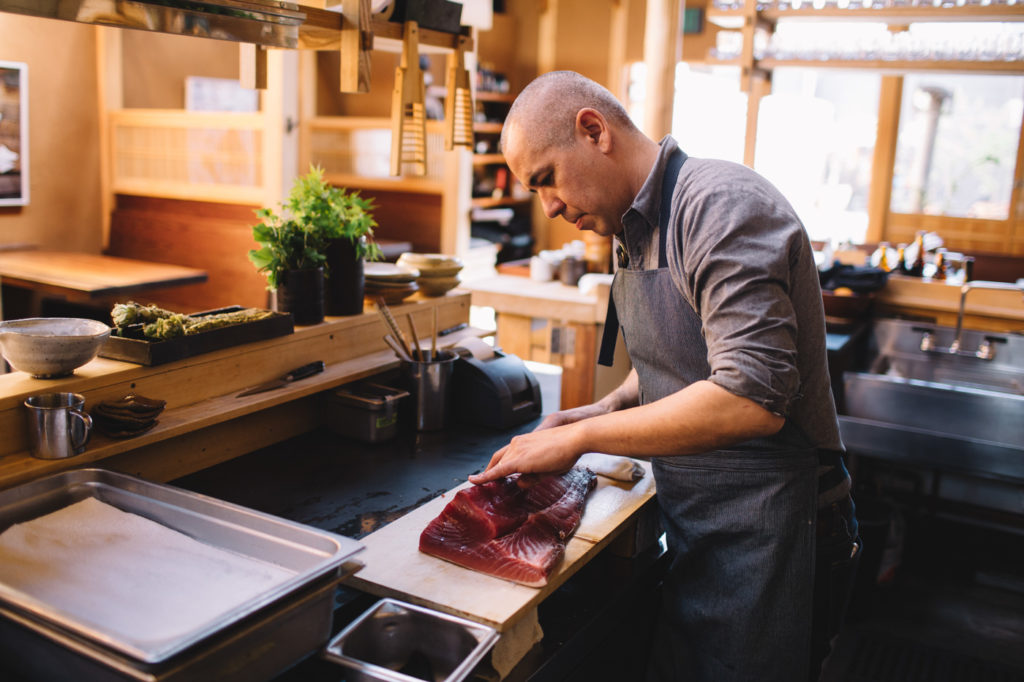
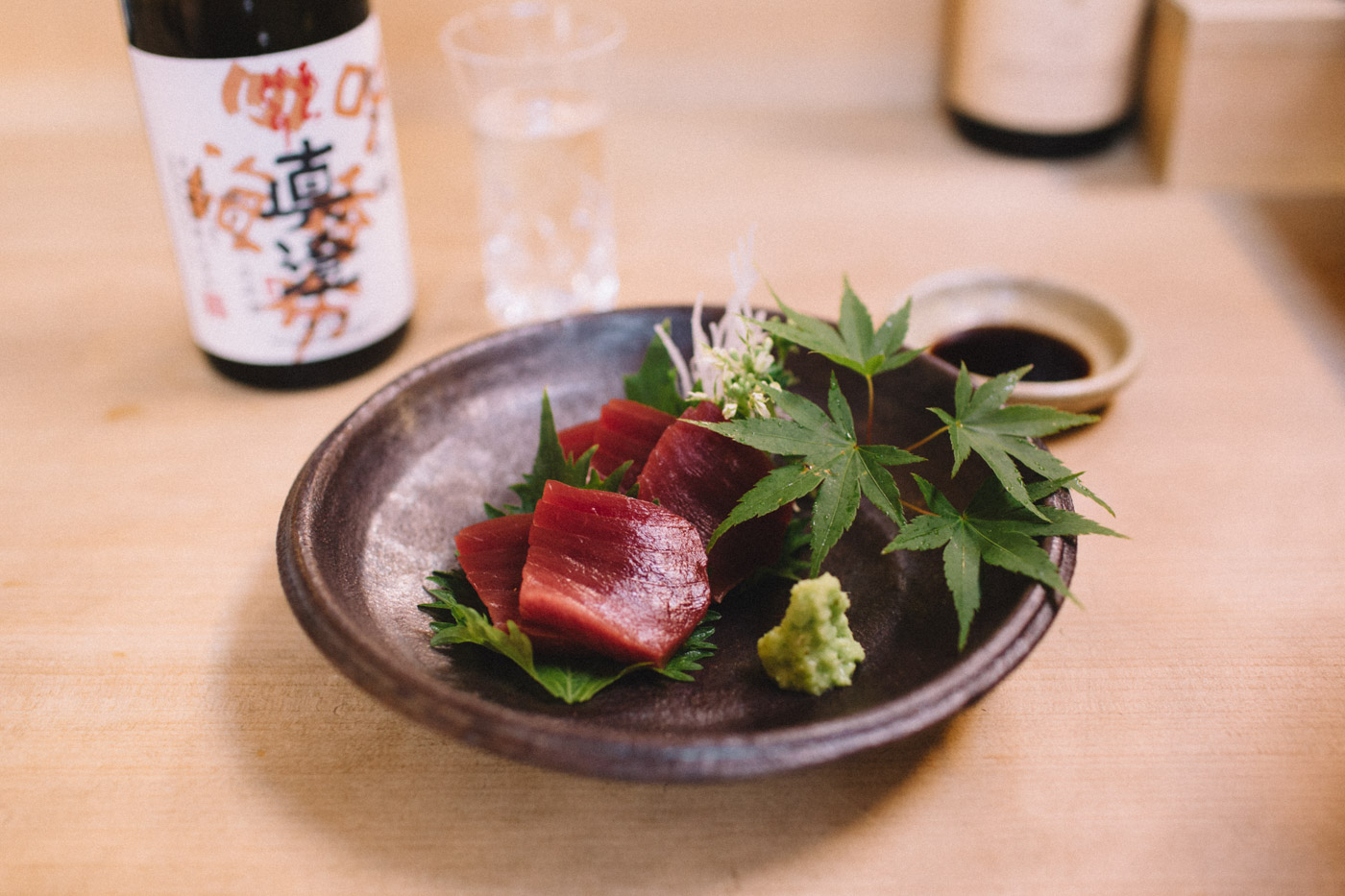
Unlike other Japanese styles of eating, there are no formal courses at Rintaro. Dishes are curated to work and play off of each other. Tofu, sashimi and vegetables are served at the beginning. Then, fried chicken and yakatori (charcoal grilled vegetables and meats) follow. Whole fish and udon conclude the meal. Brackett explained there was, and still can be, a cultural hurdle associated with taking small bites of different dishes and sharing with those at the table. He notes that American and Japanese guests treat the setting differently. He tells me, “You’ll notice that some Japanese customers have some sashimi left from 45 minutes ago that they will hold onto for later and will nibble as they go.”
The Western palate experiences taste in a more linear fashion than that of the Japanese. Our foods are heavier on salt and sugar—both fleeting flavors that encourage us to consume quickly, craving more. Japanese palates tend to experience taste as simultaneous sensations which linger on the palate. His tsukune (chicken meatball), for example, is sweet, savory, salty and juicy all at once, but not one more than the other. The sharing of courses—to eat a meatball, then a mushroom, then soft tofu, to savor the sashimi until the end—is a physical manifestation of that simultaneous taste experience of umami.
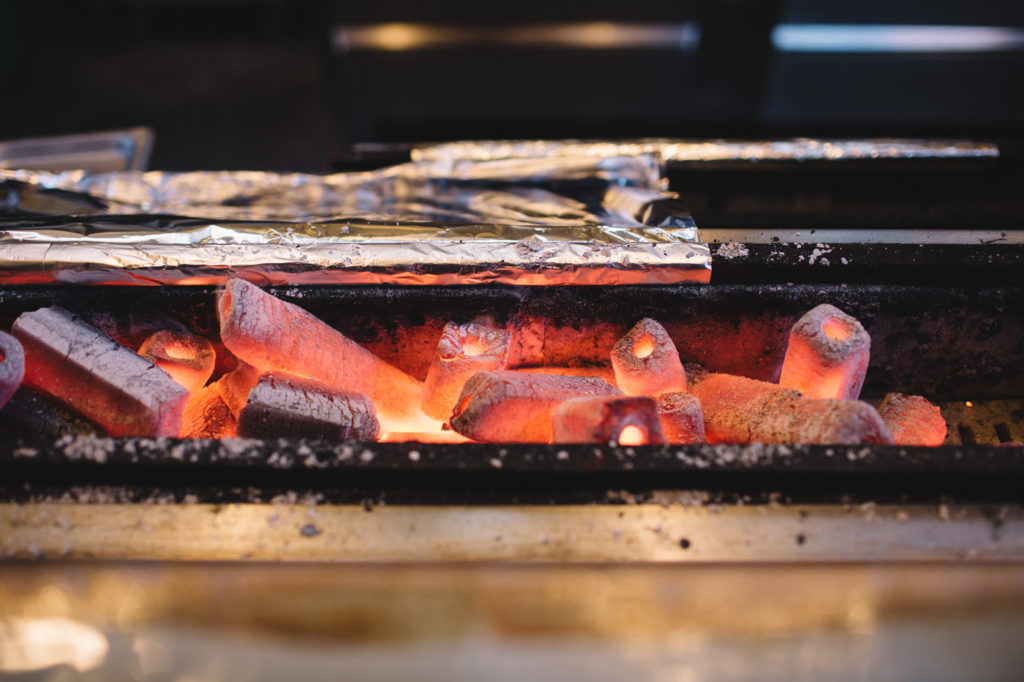
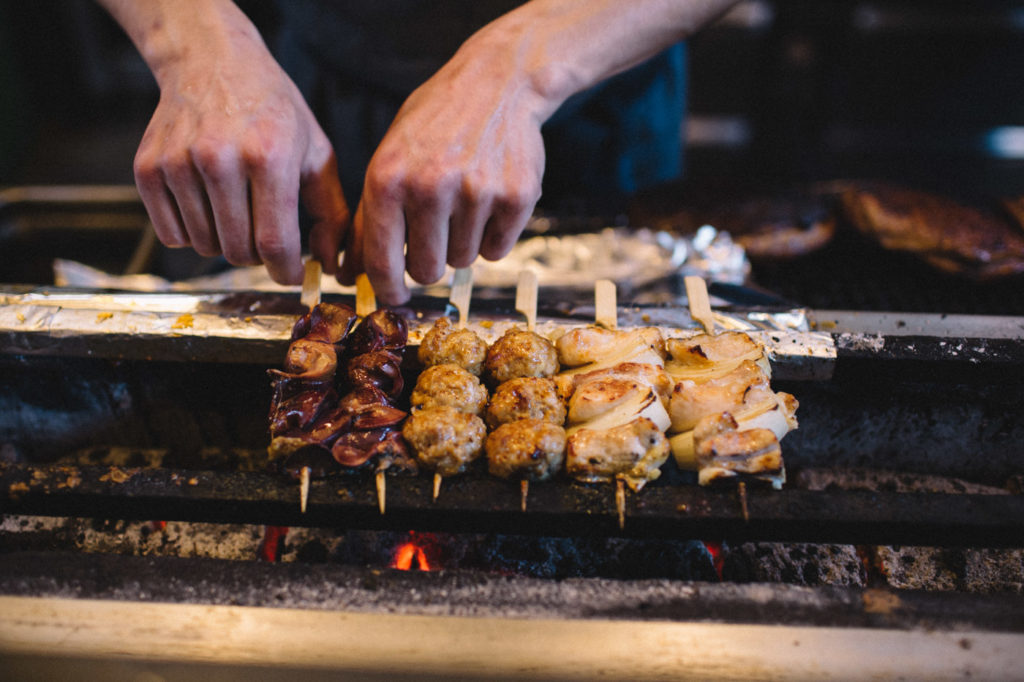
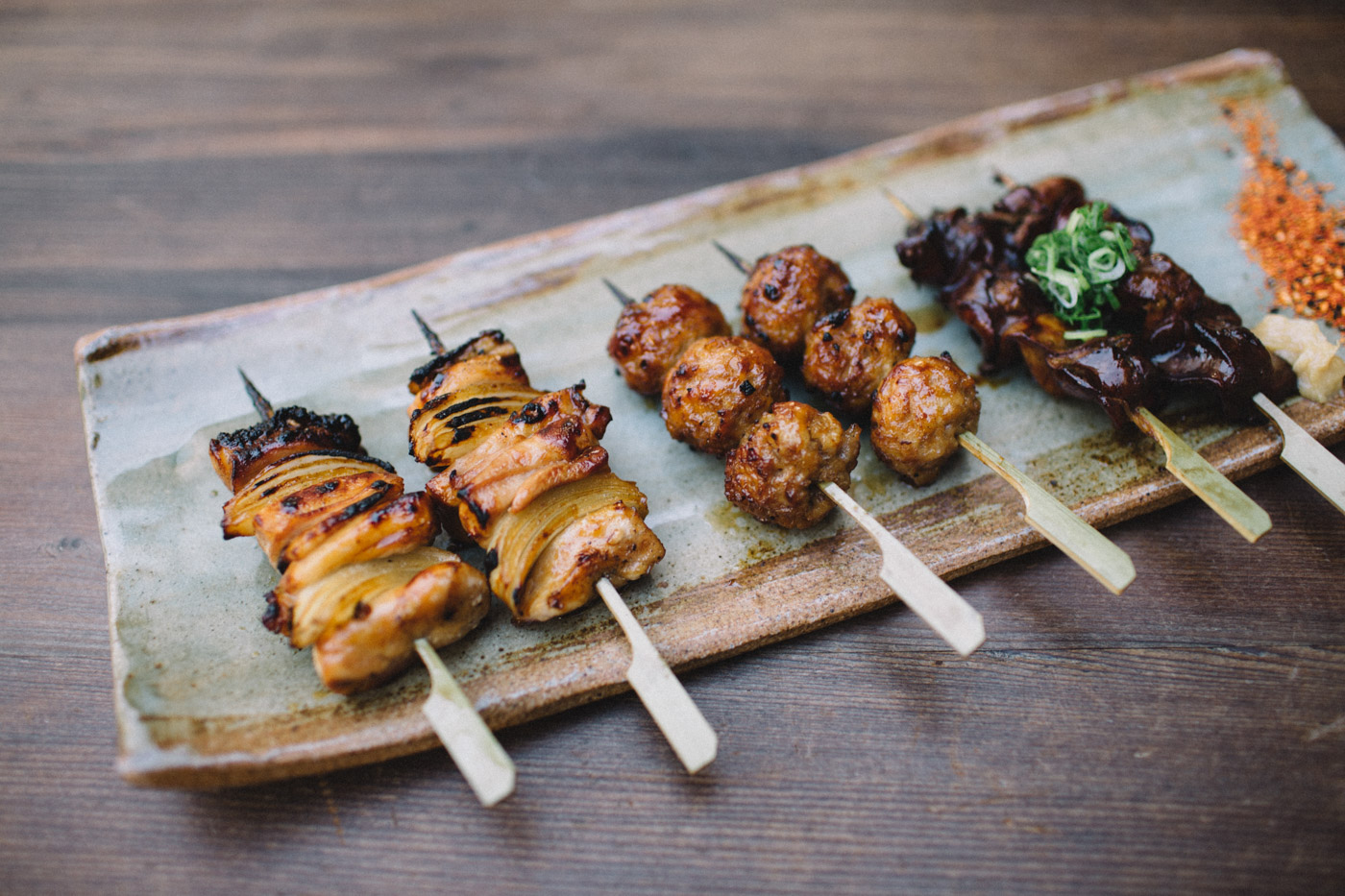
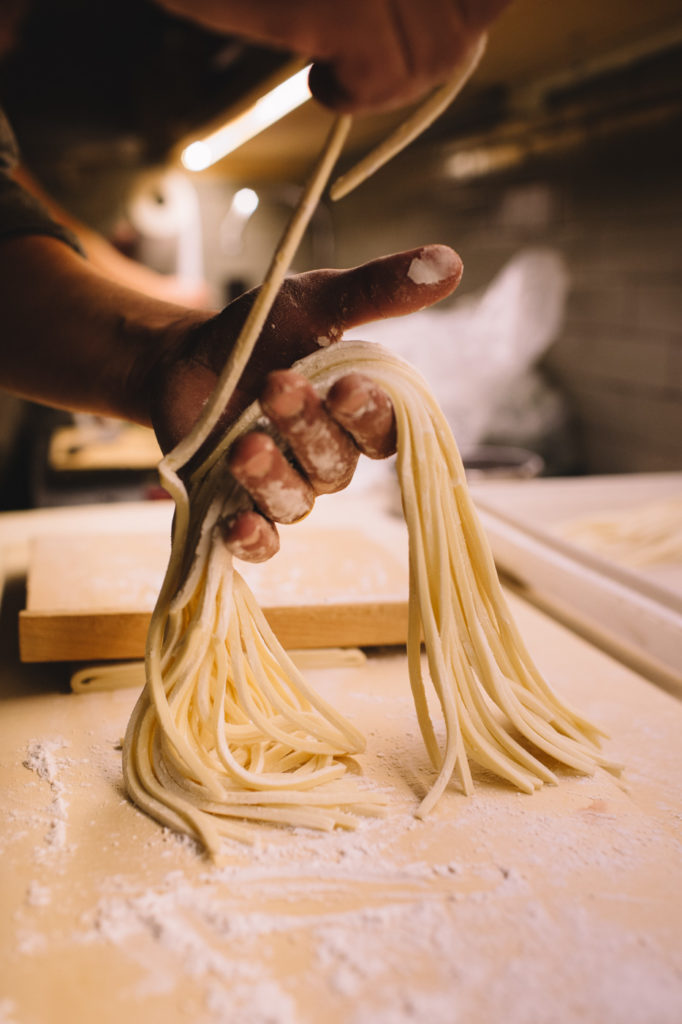
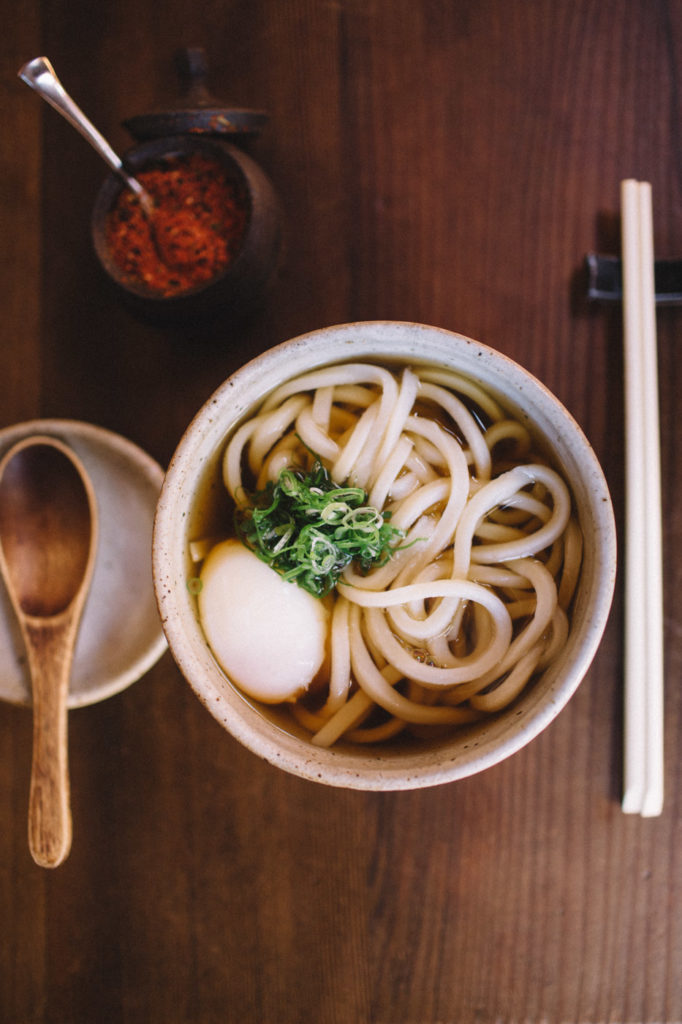
My first time at Rintaro, I struggled with the idea of sharing the space with everyone I love or keeping it as a private refuge for myself. But across the Bay Bridge at Ramen Shop, the secret is out. Patrons spill onto the sidewalk sipping Japanese whisky while they await names to be crossed off the first-come-first-served list. Inside, the space is dimly lit and loud, and every person at the communal table is smiling. I spot a woman at the chef’s counter, hunched over, glasses fogging, slurping from a deep bowl. Here, you can stay for 20 minutes or three hours.
It is said that ramen is the maverick cuisine of Japan. While there are ancient techniques in traditional Japanese cuisine, ramen leaves more room for interpretation. In part, this is because it is not distinctly Japanese; it borrows from Chinese wheat noodles and approaches vary significantly by region. At its core, ramen is personal, and expectations can be difficult to meet, because every patron has a preference on style.
Like Brackett, all three founders also worked at Chez Panisse before opening their shop. Sam White handles front of house and operations, while Rayneil De Guzman and Jerry Jaksich partner on menu execution. Their flirtation with Japanese cuisine began after individual visits to Japan seven years ago. Upon returning to the Bay Area, they were disappointed with the caliber of ramen available. They echoed Brackett’s adjustment period in departing from the flavor palate they were accustomed to painting with at Chez Panisse—balancing salt, acid and fat. It was trial and error, regional trips to Japan, and Jaksich’s expertise in noodle making that increased their literacy of the flavor landscape.
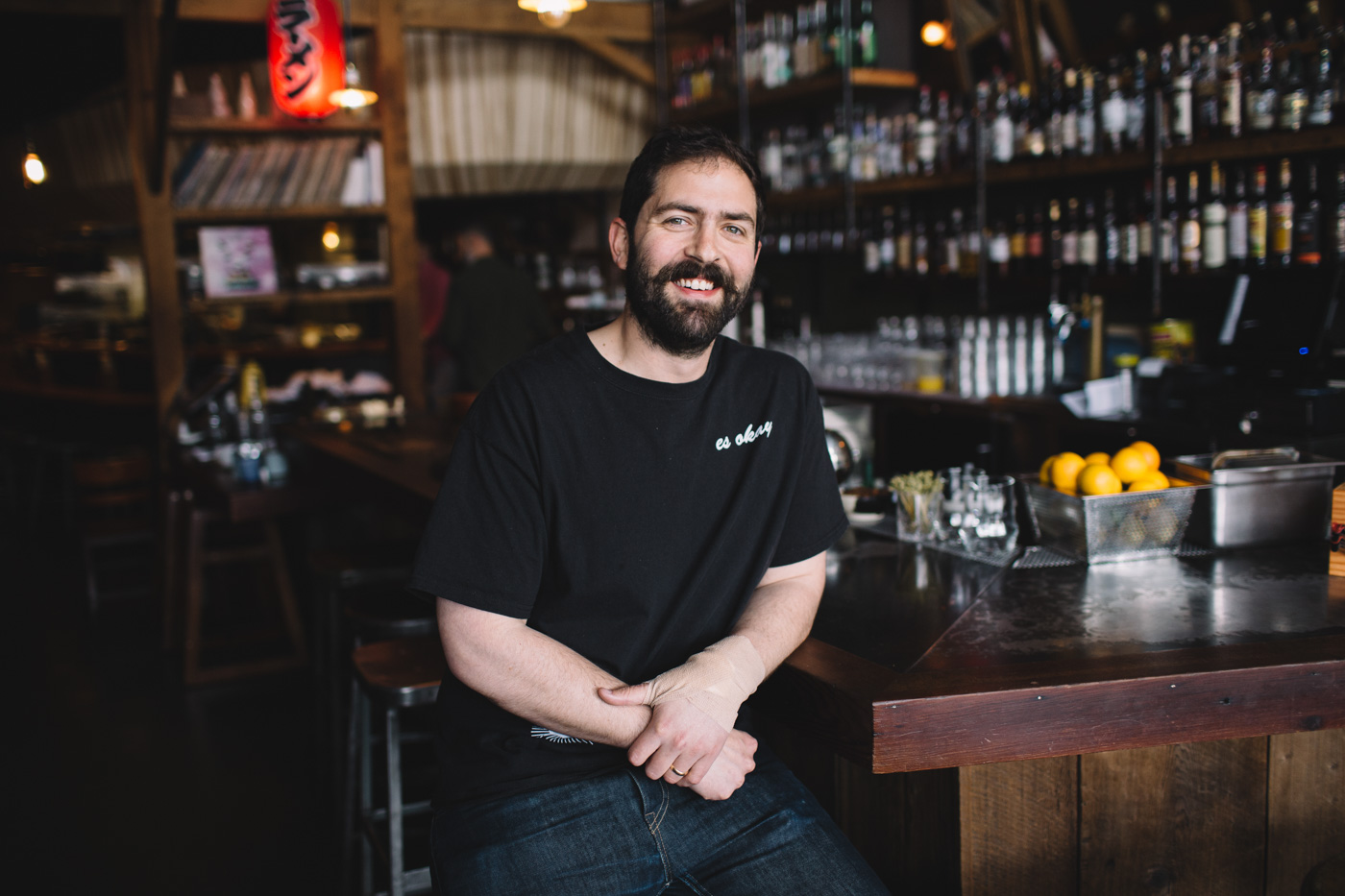
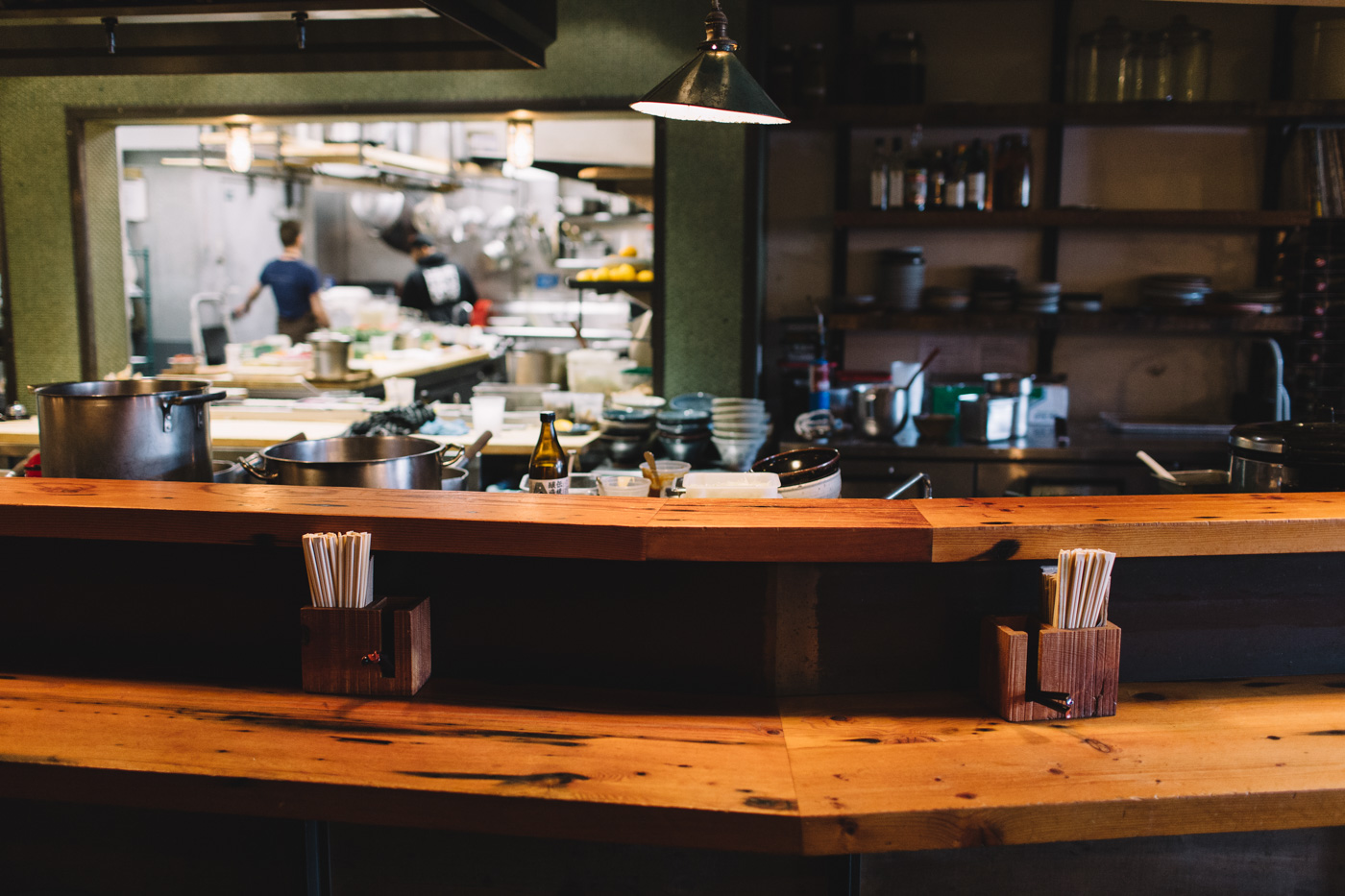
Before service, I passed through the prep kitchen. Young, tattooed chefs tossed playful banter back and forth like old friends. The chemistry was contagious. De Guzman carried a co-worker’s baby on his hip while navigating giant pots of broth in their open kitchen. He explained how they steep the ingredients by time and temperature. “I wish you could be here for eight hours to taste how the flavors layer,” he grinned.
This is the differing approach to executing their umami rich dishes. While Brackett focuses on simplification and reduction, De Guzman and Jaksich layer flavors. The most interesting aspect of umami is the endless results it can achieve with different flavor combinations. At a scientific level, when ingredients containing different umami-giving compounds are combined, they enhance one another so the dish has more flavor than the sum of its parts. The layering of broths, and the curing and smoking of fish release bound glutamates to achieve the umami sensation. This is the same reason cow’s milk has significantly more umami properties after it is fermented into a hard cheese than in its liquid state.
Although their broths and handmade noodles receive the most praise, Ramen Shop’s vegetable dishes are a distinct nod to California’s diverse selection of produce. They showcase the high level of umami properties naturally occurring in vegetables—double that of meat. Their veggie meyer lemon shoyu ramen is proof that animal proteins are not necessary to create a complex, umami rich dish. Instead, they use a broth stewed for nine hours, served with maitake and king oyster mushrooms, celery root, and mizuna in a dish that can stand up to the richness of their duck shoyu and green garlic hokkaido miso dishes.
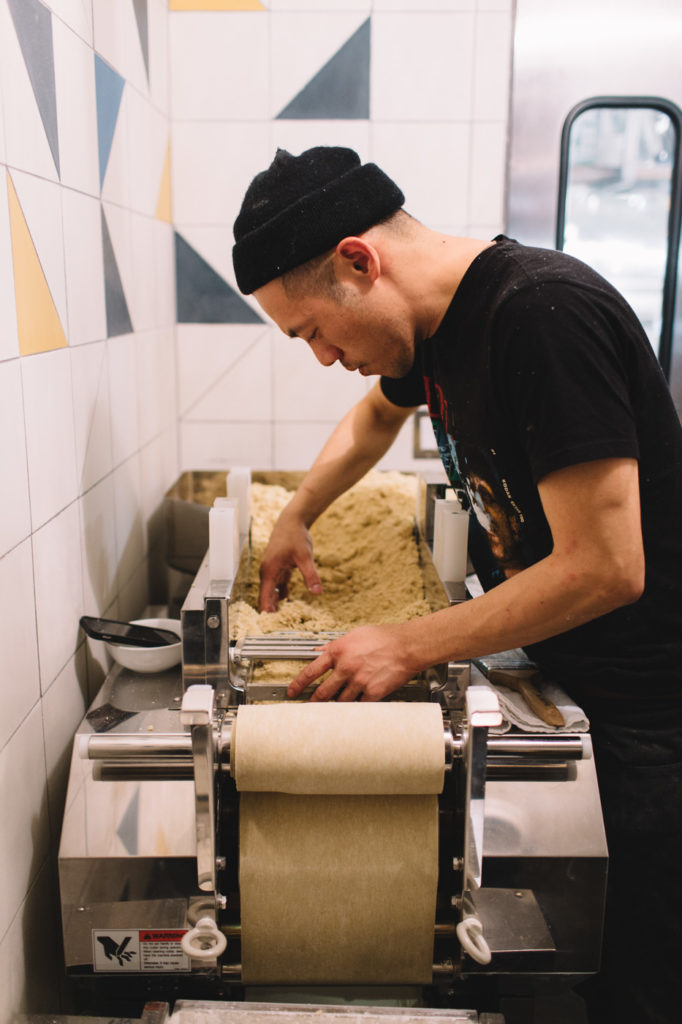
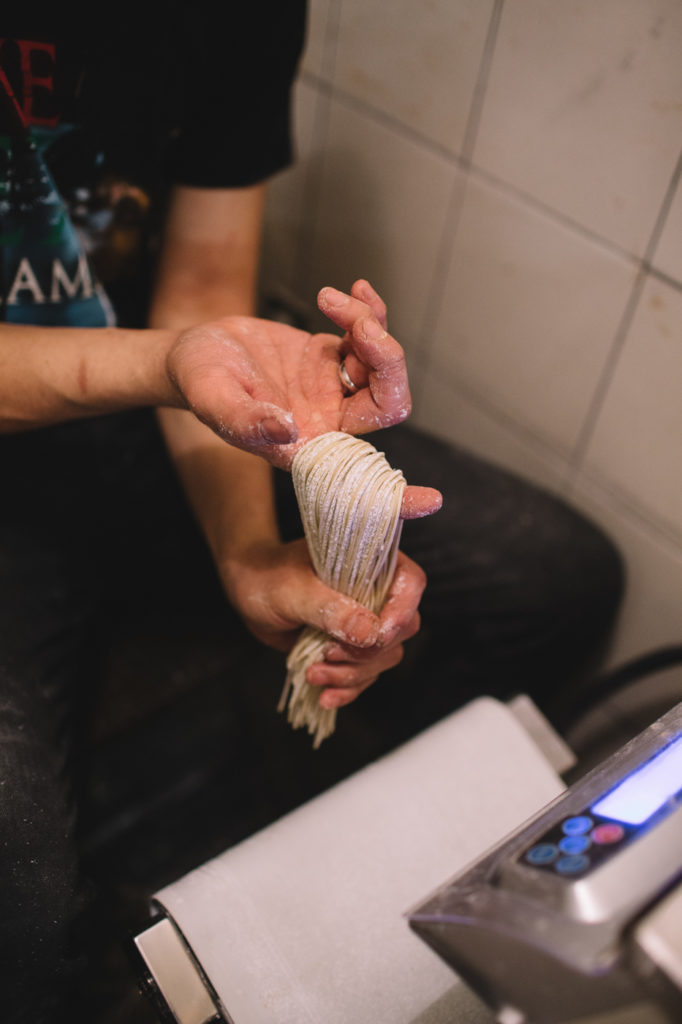
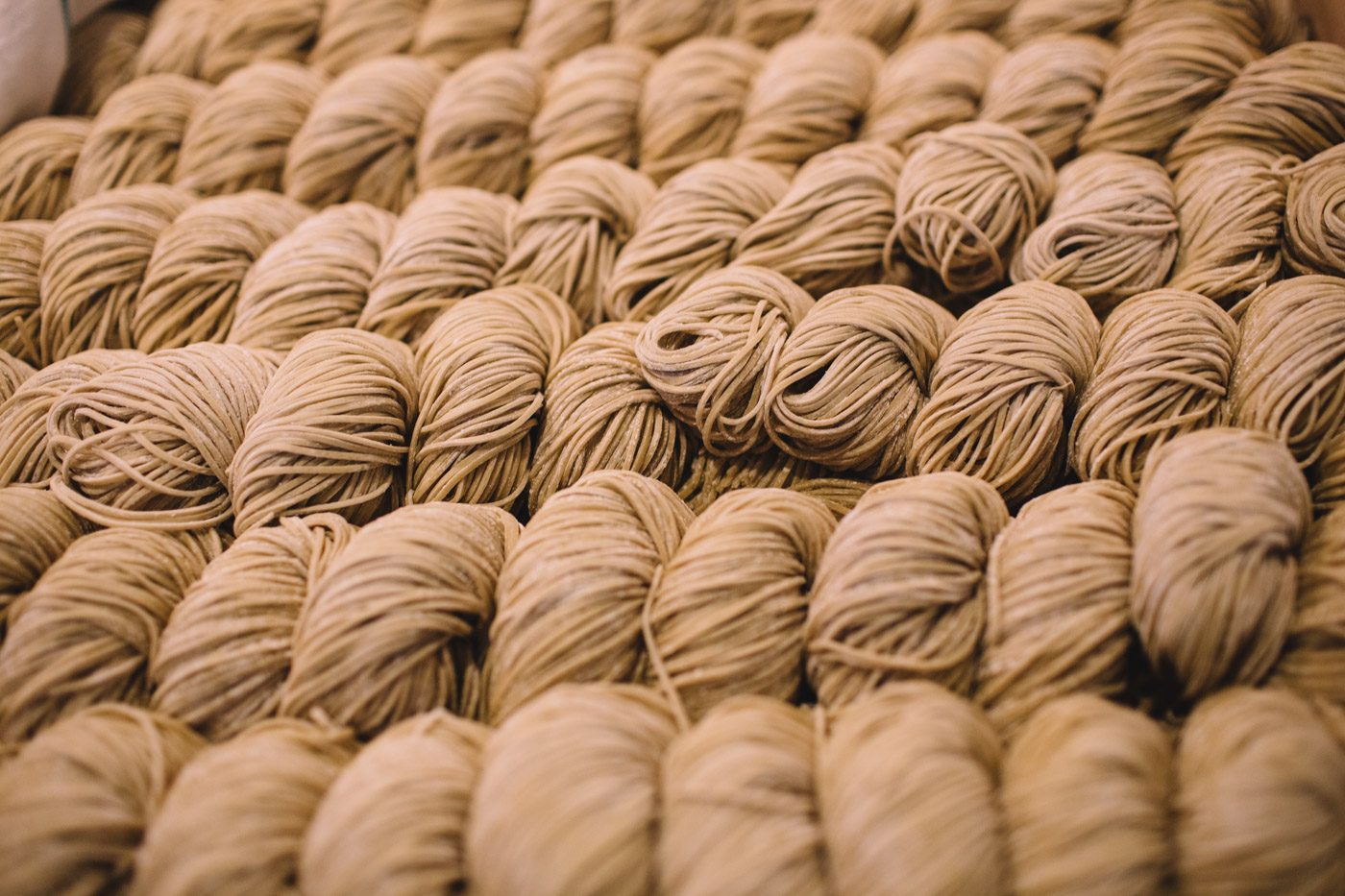
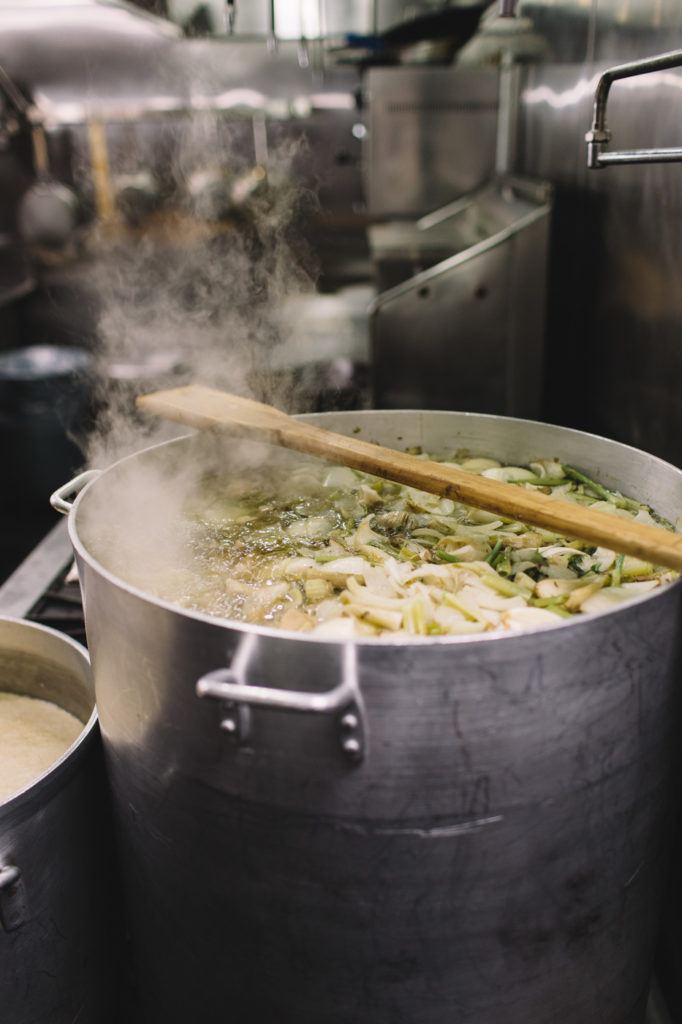
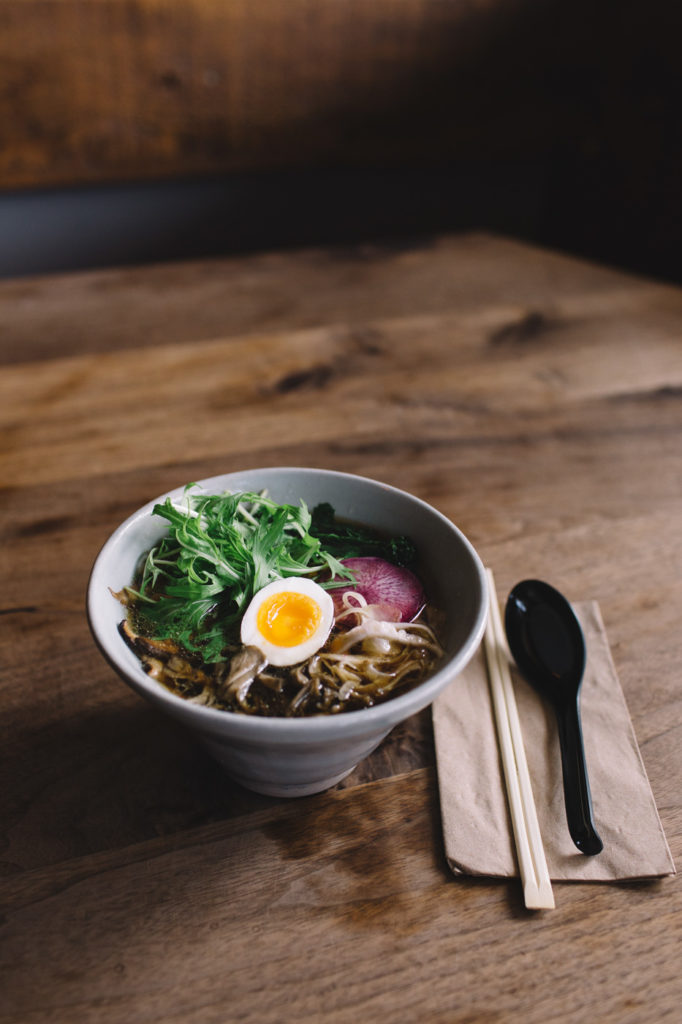
While their approach to achieving umami varies, a common thread between the restaurants, it is the essential role that dashi plays in their menus. Dashi is made by simmering kombu and katsuobushi into a stock broth. It is the single dish that quintessentially typifies umami, weaving Japanese cuisine together. The broth adds depth to their dishes, providing a delicate balance and sensation of pleasure and fulfillment. This perception of depth has been studied by scientists, some believing it is a biological reaction in response to dense nourishment. For most Westerners, dashi is their first memorable experience with umami.
Most children in the United States have a more limited food experience than that of Japanese children. The pseudo-safety of a kid’s menu leads children to explore less, defaulting to chicken fingers, carrot sticks, and heavily-sweetened snacks. While it can be intimidating for even an adult to try a new cuisine, both Rintaro and Ramen Shop remove the didactic instruction of how to consume, and instead invite their guests to playfully immerse themselves in umami. The intersection of these innovative chefs with a diverse variety of produce, farmed by a legacy of Japanese farmers, make the Bay Area a top contender for an umami taste experience.





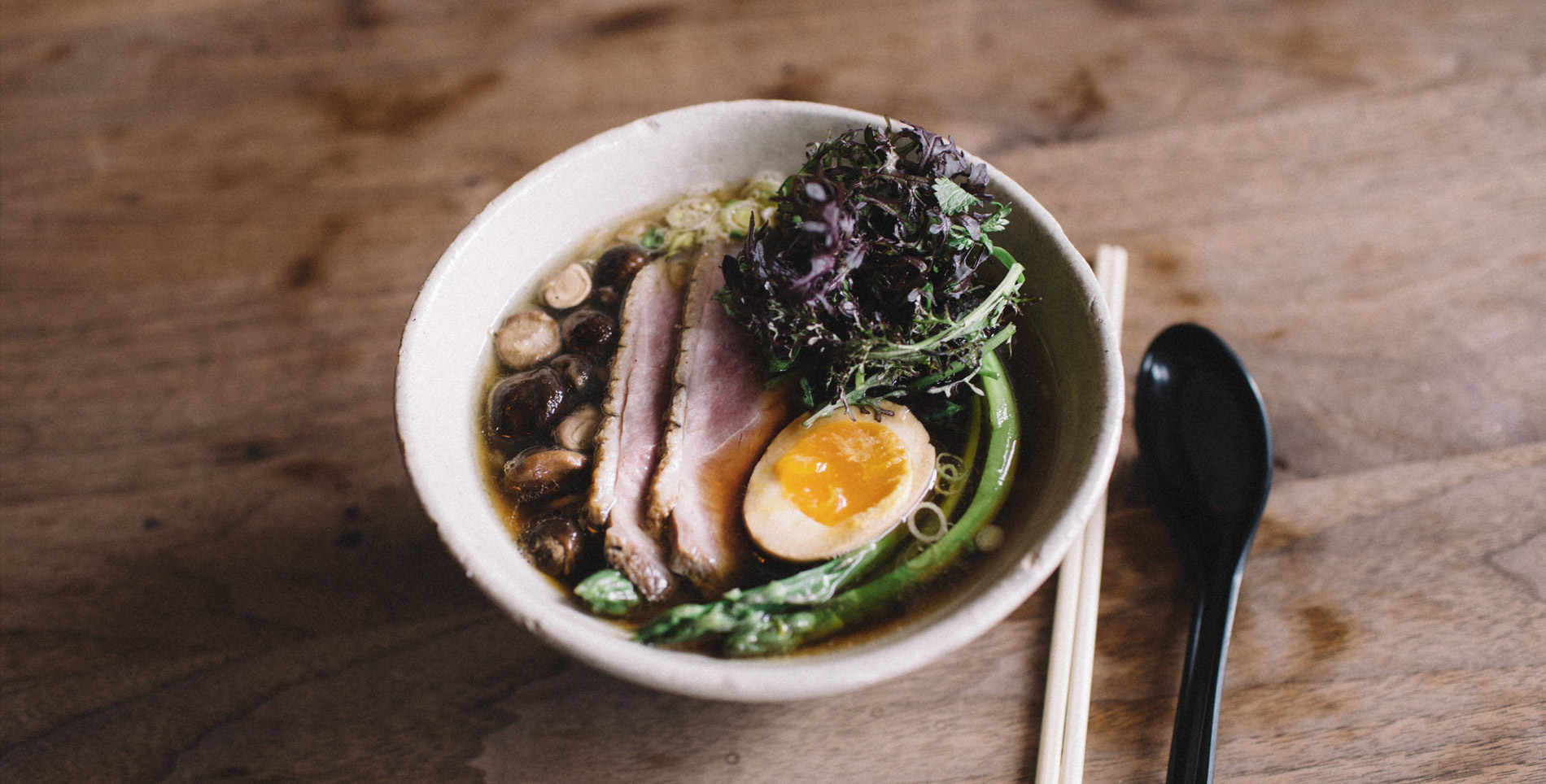

Our comments section is for members only.
Join today to gain exclusive access.